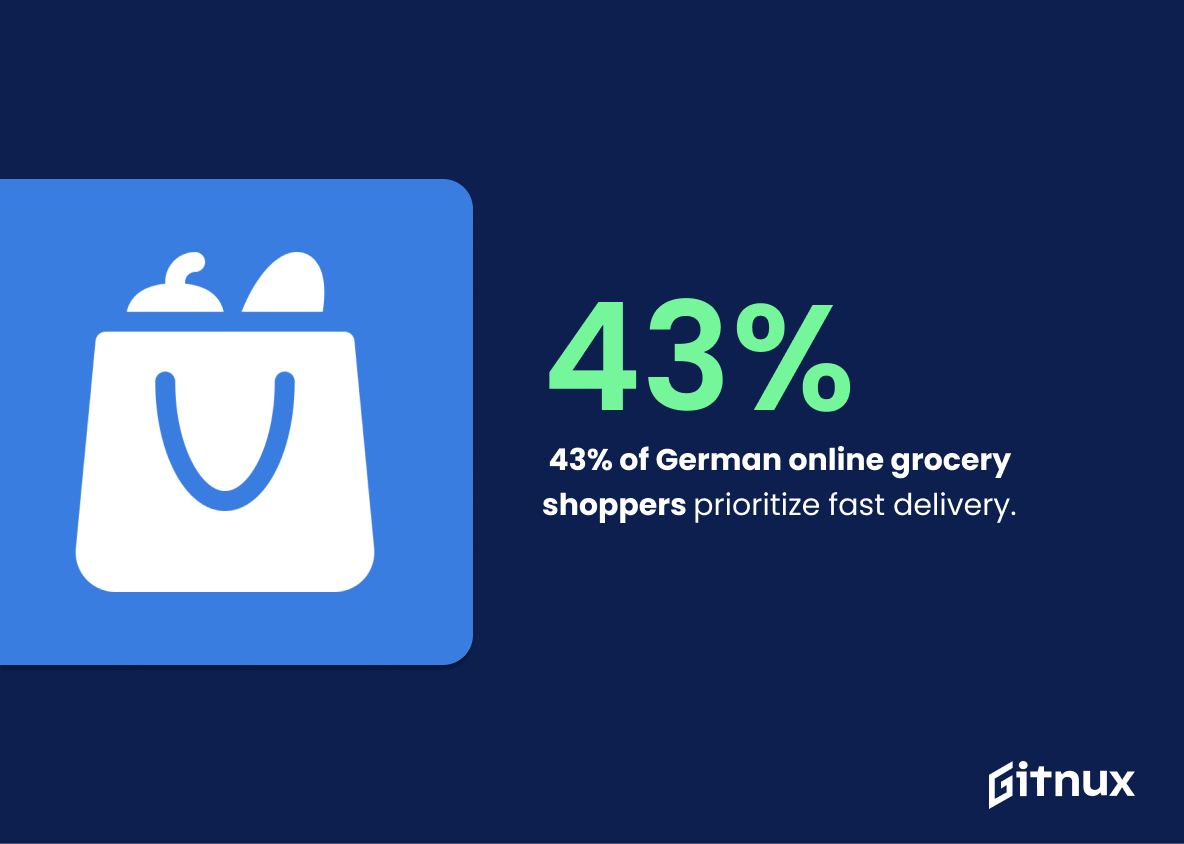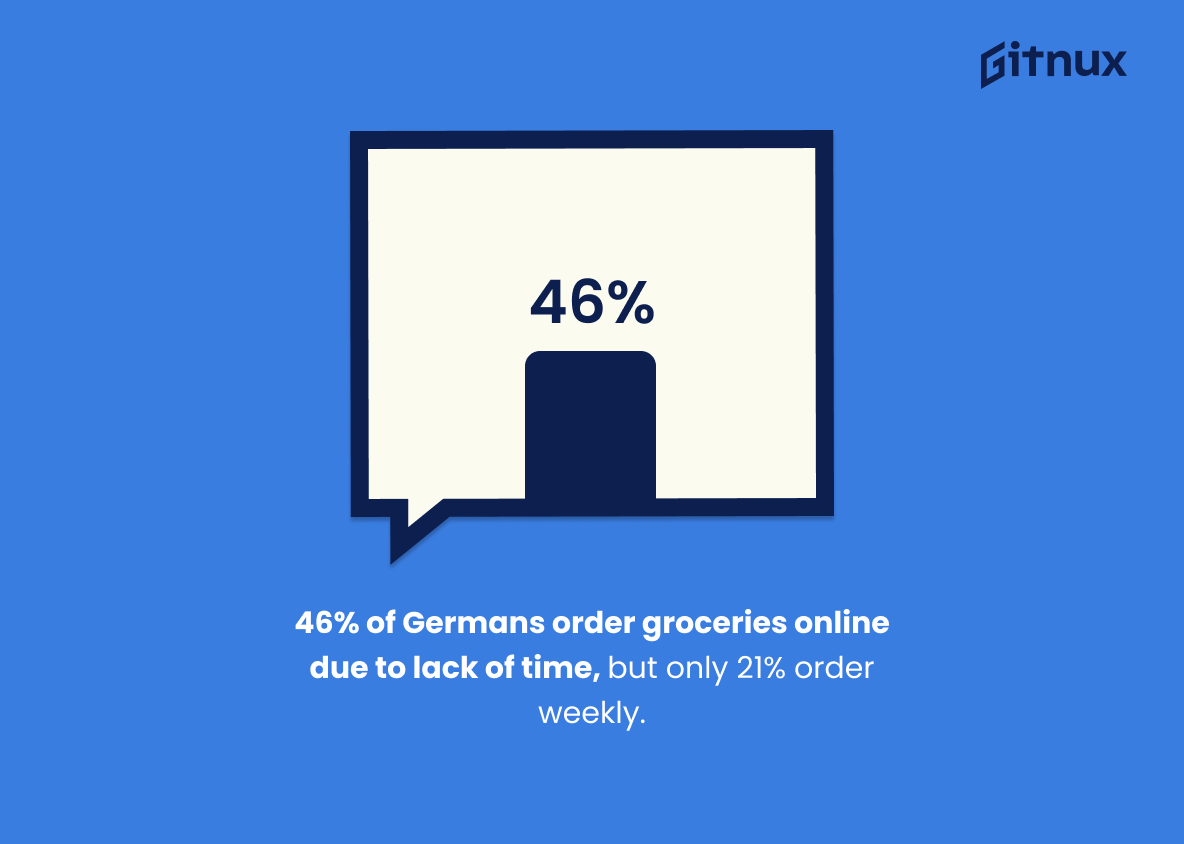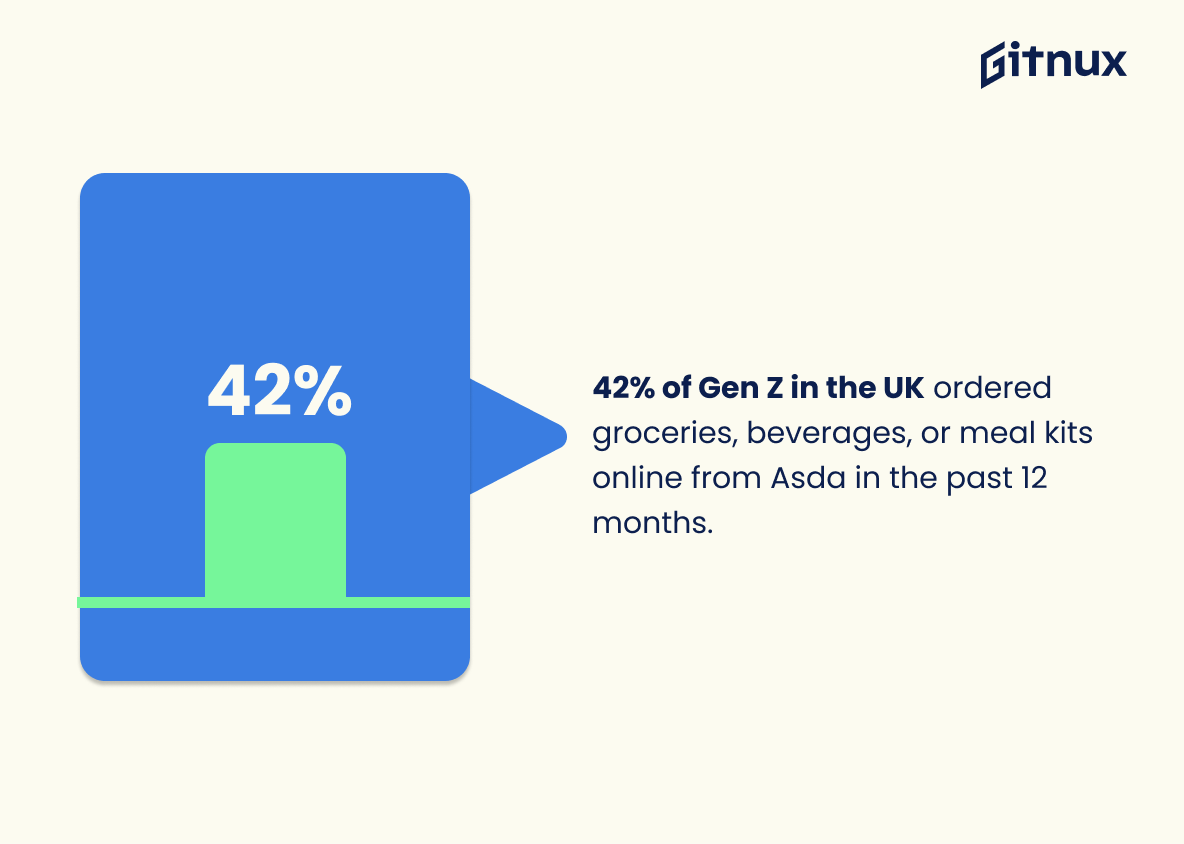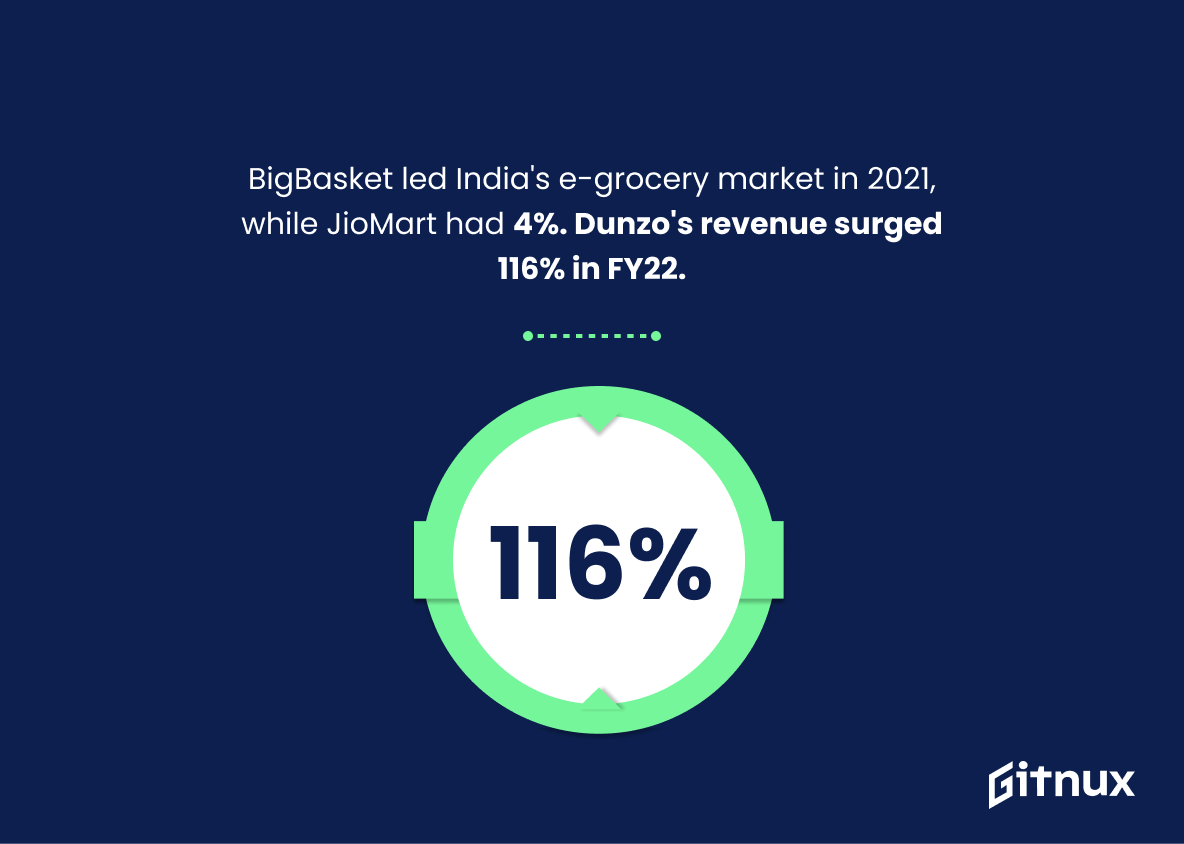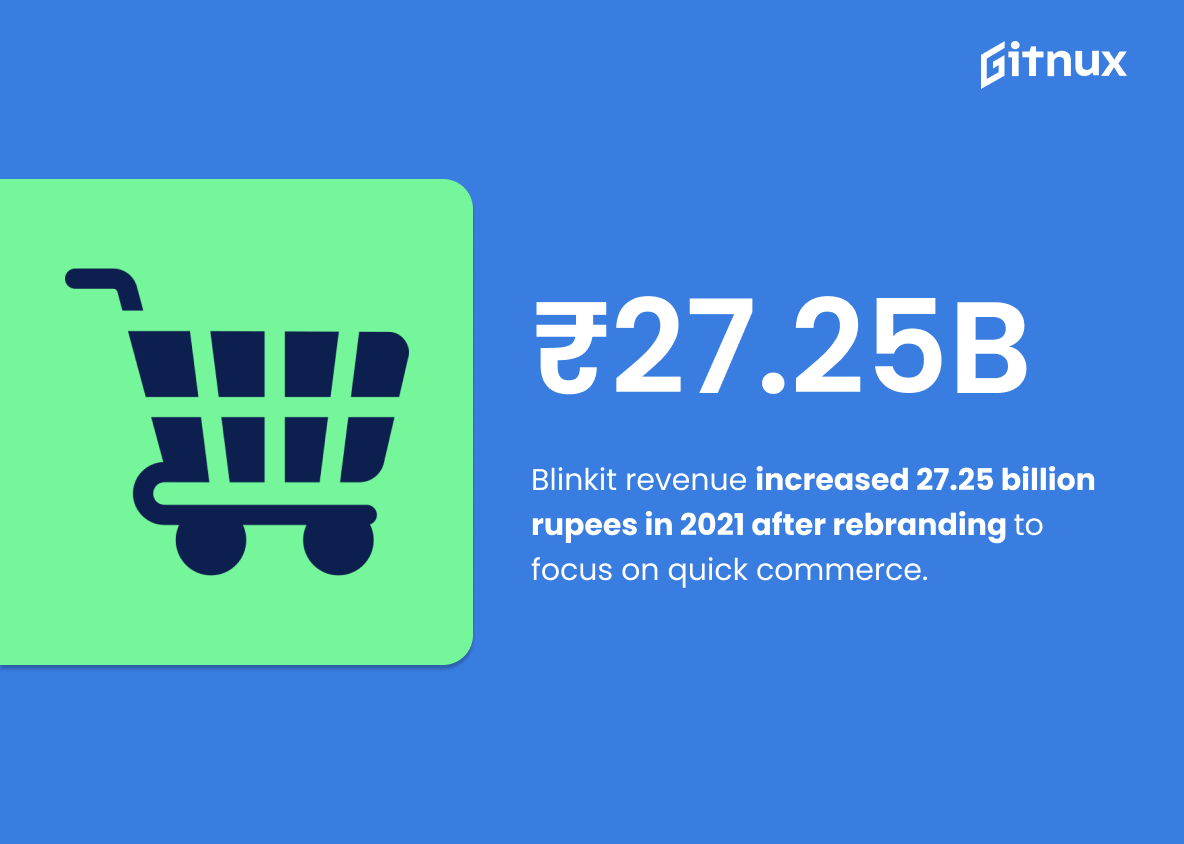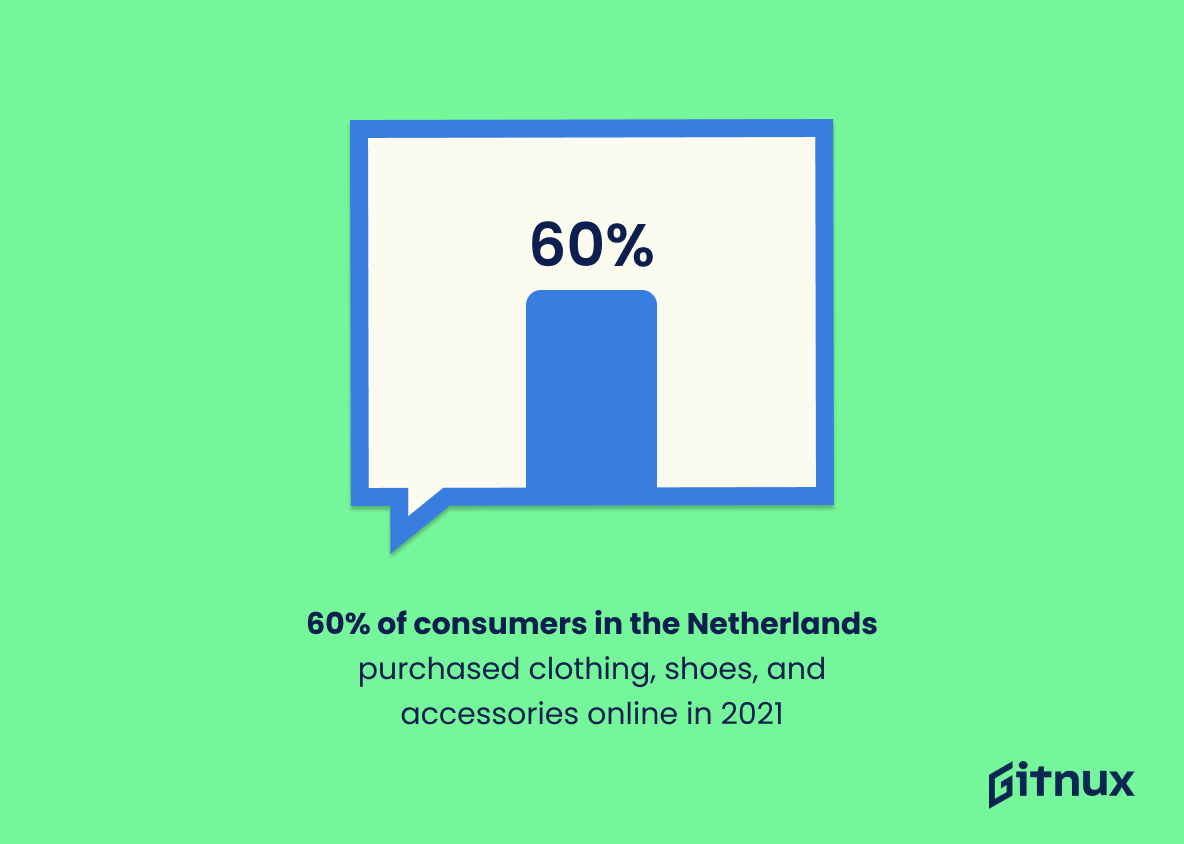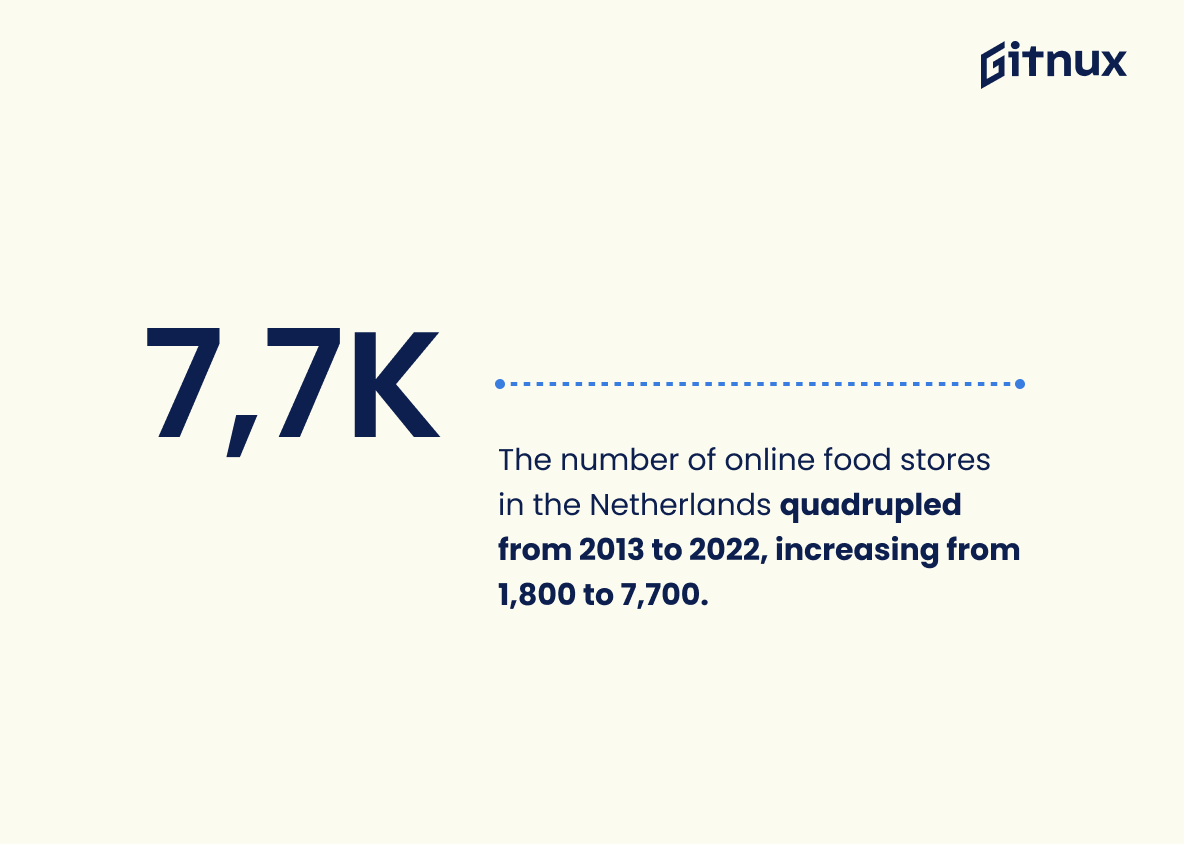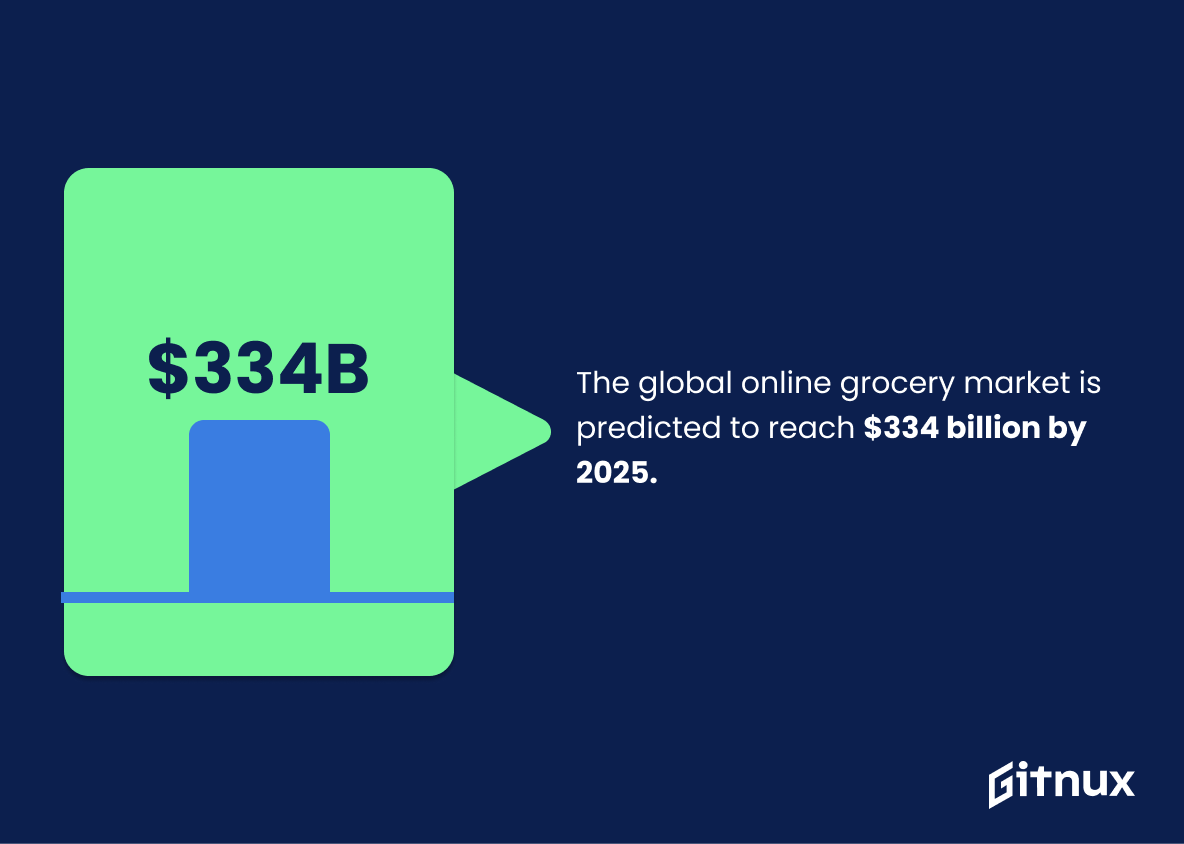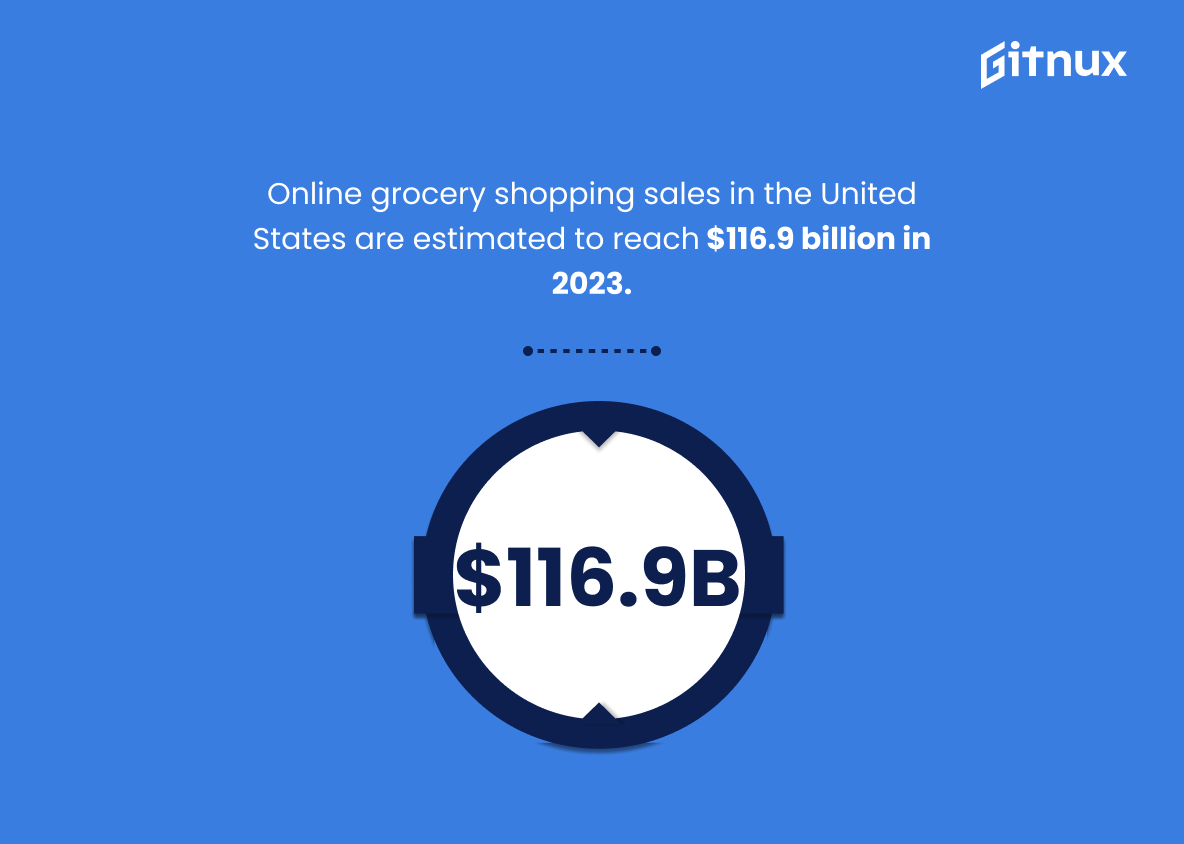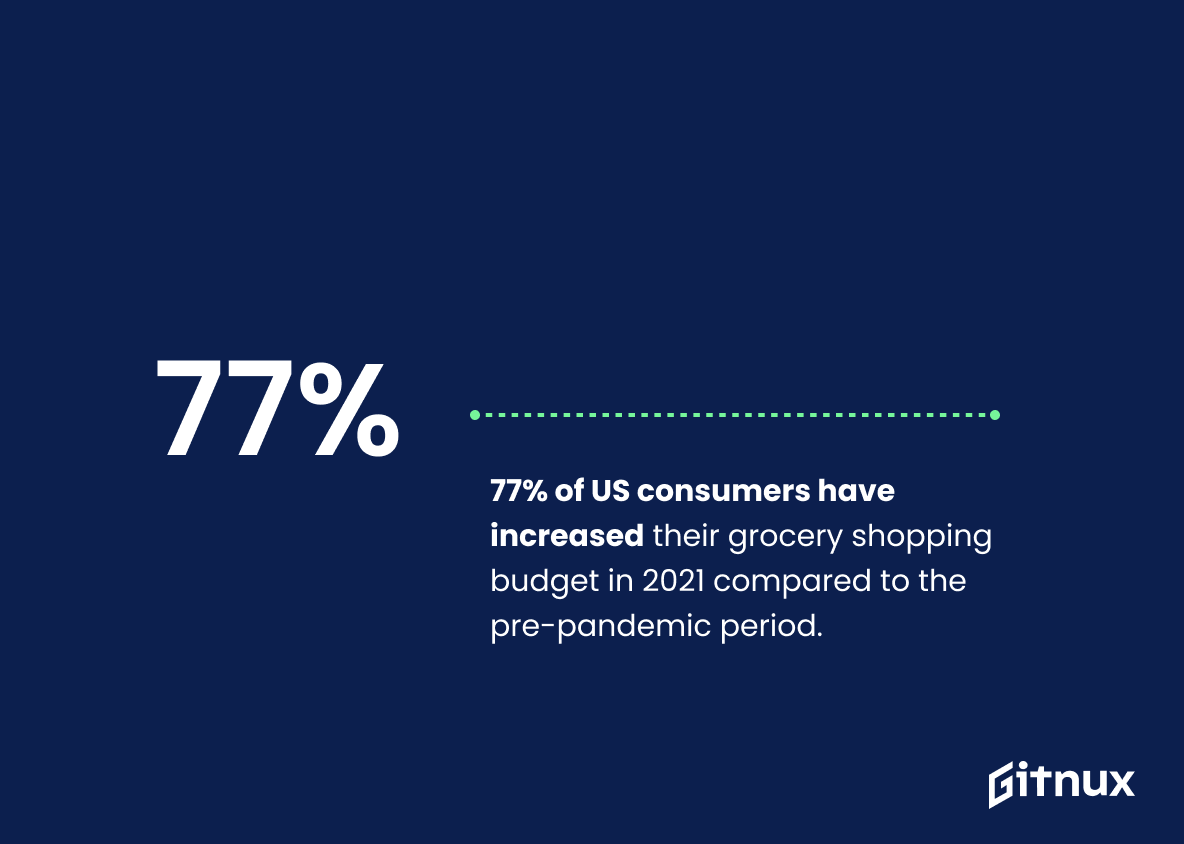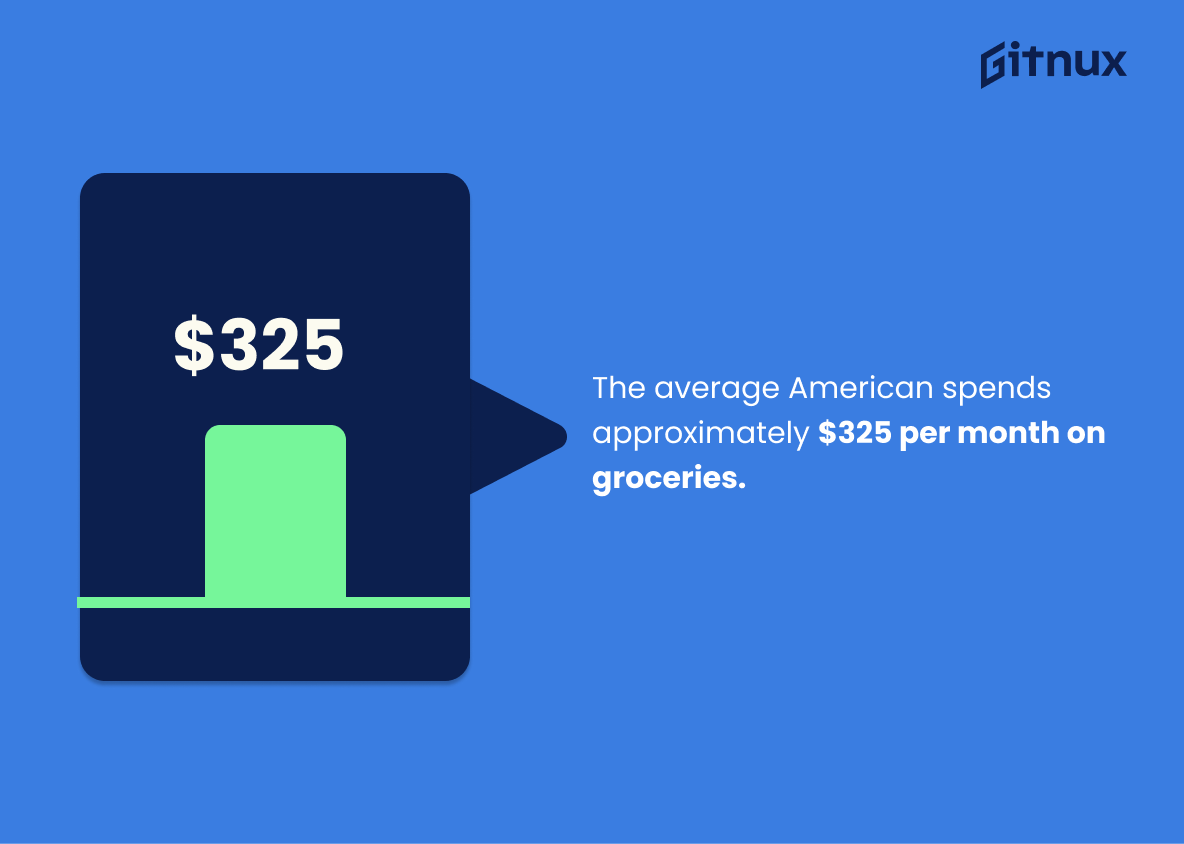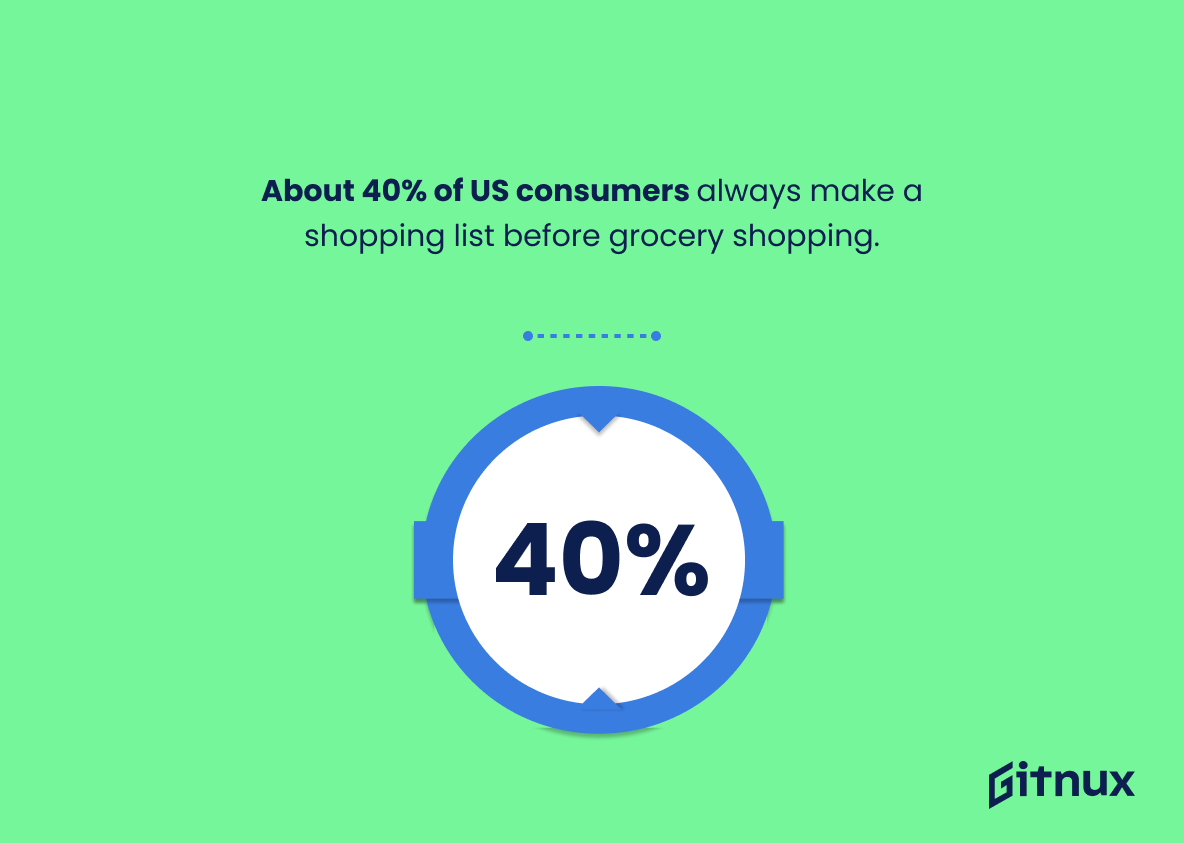Grocery shopping is a necessary part of life, and it’s no surprise that it’s a big industry. But how much do we really know about grocery shopping? In this blog post, we’ll take a look at some of the most interesting grocery shopping statistics and explore what they tell us about the industry.
From the amount of money spent on groceries to the most popular grocery stores, you’ll get a better understanding of the grocery shopping industry. So let’s dive in and explore the fascinating world of grocery shopping statistics.
Grocery Shopping: The Most Important Statistics
63% of Gen Z respondents in the UK are online grocery & beverage shoppers in 2022.
60% of consumers in the Netherlands purchased clothing, shoes, and accessories online in 2021, with fashion being the most purchased category.
Grocery Shopping Statistics Overview
43% of respondents in Germany in 2021 stated that fast delivery was an important criterion when buying groceries online, with low prices and a wide selection of products also being important.
This highlights the need for online grocery stores to prioritize fast delivery times, low prices, and a wide selection of products in order to meet customer expectations.
46% of respondents in Germany ordered groceries online due to lack of time, while only 21% ordered their entire weekly groceries online.
Although people are increasingly turning to online grocery shopping, they are still not comfortable with ordering all of their groceries online.
63% of Gen Z respondents in the UK are online grocery & beverage shoppers in 2022.
This statistic is important because it shows the increasing trend of online grocery shopping among Gen Z in the UK, which is indicative of the larger shift towards online grocery shopping in the country. It could have implications for the way grocery stores operate in the future, as well as the way that grocery retailers market their products.
42% of Gen Z in the UK ordered groceries, beverages, or meal kits online from Asda in the past 12 months.
The market value of online grocery in India was over 100 billion rupees in 2019 and is expected to reach 1,170 billion rupees in 2024.
Thus, more people are turning to online grocery shopping as a convenient and cost-effective way to purchase groceries.
BigBasket had a 37% share of the e-grocery market in India in 2021, while JioMart had 4%. Dunzo’s revenue increased from 251 million Indian rupees in the previous fiscal year to 543 million Indian rupees in 2022, a significant increase.
Therefore, the demand for online grocery delivery services is growing, which suggests that more people are turning to online grocery shopping as a viable option. This could have implications for the future of grocery shopping in India.
Blinkit (formerly Grofers) saw a 27.25 billion Indian rupee increase in revenue in 2021 due to rebranding to focus on quick commerce services.
This shows that rebranding to focus on quick commerce services can lead to a significant increase in revenue. It can be a useful insight for other companies in the grocery delivery industry looking to increase their revenue.
60% of consumers in the Netherlands purchased clothing, shoes, and accessories online in 2021, with fashion being the most purchased category.
Thus, online shopping is also becoming increasingly popular in the Netherlands, and that it is likely that grocery shopping will also become more popular in the near future. This could have a significant impact on the grocery industry, as more people are likely to shop online for their groceries.
The number of online food stores in the Netherlands quadrupled from 2013 to 2022, increasing from 1,800 to 7,700.
On this, one can see the rapid growth of online food stores in the Netherlands, which is indicative of the shift in consumer preferences towards online grocery shopping. This trend is likely to continue in the future, as more and more people are turning to online shopping for their groceries.
The global online grocery market is predicted to reach $334 billion by 2025.
The market is expected to more than double in size over the next five years, indicating that more and more people are turning to the convenience of online grocery shopping. This is an important trend to be aware of for anyone interested in the grocery shopping industry.
Online grocery shopping sales in the United States are estimated to reach $116.9 billion in 2023.
More and more people are turning to the convenience of online grocery shopping, and that this trend is only expected to continue in the coming years. This statistic is an important indicator of the future of grocery shopping, and is essential to understanding the current and future state of the industry.
The average American household makes 1.6 grocery shopping trips per week.
This highlights the frequency with which households are engaging in this activity, and the importance of having access to the necessary resources to do so. This statistic is a valuable insight into the grocery shopping habits of the average American household, and can be used to inform decisions about how to best serve the needs of these households.
In 2020, 3.5% of total groceries purchased in the United States were made online.
More and more people are turning to online grocery shopping as a convenient and safe way to purchase their groceries. This shift in consumer behavior is likely to continue in the future, making it an important statistic to consider when discussing grocery shopping trends.
77% of US consumers have increased their grocery shopping budget in 2021 compared to the pre-pandemic period.
The majority of consumers have had to adjust their budgets to accommodate the changes in their shopping habits, likely due to the increased cost of groceries and the need to stock up on essential items. This statistic is an important reminder of the financial burden the pandemic has placed on many households.
The average American spends approximately $325 per month on groceries.
On average, Americans are dedicating a significant portion of their monthly budget to stocking up on food and other essential items. This statistic is a valuable insight into the grocery shopping habits of Americans and can be used to inform decisions about how to best meet the needs of shoppers.
About 40% of US consumers always make a shopping list before grocery shopping.
A large portion of shoppers are taking the time to create a list before they go to the store, which can help them save money and time by avoiding impulse purchases and ensuring they get all the items they need.
32% of millennials buy groceries online once a week or more.
Millennials are increasingly turning to online grocery shopping as a convenient and efficient way to purchase their groceries. This statistic is important to consider when discussing grocery shopping statistics, as it highlights the growing trend of online grocery shopping and its impact on the industry.
Walmart leads the US grocery store market, with a share of 26.8% in 2021.
This statistic is a testament to Walmart’s dominance in the US grocery store market, highlighting the company’s impressive market share of 26.8% in 2021. It is a clear indication of Walmart’s success in the grocery store industry and serves as a reminder of the company’s ability to remain competitive in a highly saturated market.
15% of US households use grocery delivery services regularly.
A significant portion of households are taking advantage of the convenience and ease of having their groceries delivered right to their door. This statistic is important to consider when discussing grocery shopping statistics, as it demonstrates the changing landscape of how people are shopping for groceries.
Women spend an average of 41 minutes per grocery shopping trip, while men spend 39 minutes.
Women may be more thorough in their grocery shopping trips, taking more time to select items and compare prices, while men may be more focused on getting in and out of the store quickly. This could have implications for marketing strategies, as well as for store layout and product placement.
Fresh produce is the most purchased category of items in grocery stores, with 87.7% of households buying it in 2020.
The vast majority of households prioritize fresh produce when shopping for groceries, making it a key component of grocery shopping. This information is essential for any blog post about grocery shopping statistics, as it provides insight into the preferences of shoppers and the importance of fresh produce in the grocery store.
The private label market accounted for 19% of total US grocery sales in 2020.
More and more shoppers are turning to these products as a cost-effective alternative to name-brand items. This shift in consumer behavior has significant implications for the grocery industry, as it could lead to increased competition and lower prices for shoppers.
85% of global consumers are willing to switch to an alternative grocery store for a better shopping experience.
The majority of global consumers are willing to take their business elsewhere if they don’t feel they are getting the best possible experience. This highlights the need for grocery stores to prioritize customer satisfaction and ensure they are providing the best possible shopping experience.
Approximately 57% of grocery shoppers use coupons regularly.
A majority of shoppers are taking advantage of coupons to save money on their grocery purchases, which can be a great way to reduce costs. Additionally, this statistic can be used to inform marketing strategies for grocery stores, as they can use coupons to attract more customers and increase sales.
Nearly 60% of US consumers want self-checkout options when grocery shopping.
The majority of US consumers are looking for convenience and autonomy when it comes to their grocery shopping experience. This could be a sign that traditional checkout lines are becoming less popular, and that self-checkout options are becoming the preferred choice for many shoppers. This could have a significant impact on the way grocery stores operate in the future.
53% of US shoppers consider sustainability as an important factor when choosing a grocery store.
More and more people are becoming conscious of their environmental impact and are looking for ways to reduce it. This is an important factor to consider when discussing grocery shopping statistics, as it highlights the need for grocery stores to provide sustainable options for their customers.
In the United States, 90% of grocery sales still occur in brick-and-mortar stores.
Despite the rise of online shopping, brick-and-mortar stores remain the primary source of grocery sales in the United States. This statistic serves as a reminder that physical stores are still a major part of the grocery shopping landscape and should not be overlooked.
65% of grocery shoppers prefer to shop at stores that offer a wide selection of locally sourced items.
This speaks to the importance of offering a wide selection of locally sourced items in order to attract and retain customers. This information can be used to inform grocery store owners and marketers of the importance of stocking locally sourced items in order to remain competitive in the grocery shopping market.
The average American household spends $4,643 annually on groceries.
Groceries are a major expense for many households, and that grocery shopping is an activity that requires careful consideration and budgeting. This statistic is a valuable piece of information for anyone looking to gain insight into the grocery shopping habits of the average American household.
Conclusion
Grocery shopping is an essential part of everyday life, and it’s important to understand the trends and statistics associated with it. From the rise of online grocery shopping to the increasing popularity of meal kits, it’s clear that the grocery shopping landscape is changing rapidly.
With the right strategies and insights, businesses can capitalize on these trends to better serve their customers and increase their bottom line. By staying informed and up-to-date on the latest grocery shopping statistics, businesses can ensure they remain competitive in the ever-evolving grocery shopping landscape.
References
1 – https://www.statista.com/statistics/1322934/online-grocery-shopping-criteria-germany/
2 – https://www.statista.com/statistics/1322919/online-grocery-shopping-situations-germany/
3 – https://www.statista.com/forecasts/1309078/online-grocery-and-beverage-shoppers-in-the-uk-by-generation
4 – https://www.statista.com/forecasts/1309080/online-grocery-and-beverage-shopping-by-store-brand-in-the-uk-by-generation
5 – https://www.statista.com/statistics/1115613/india-online-grocery-market-value/
6 – https://www.statista.com/statistics/1301277/india-e-grocery-market-share-by-company/
7 – https://www.statista.com/statistics/1315945/dunzo-operating-revenue/
8 – https://www.statista.com/statistics/1289874/blinkit-india-revenue/
9 – https://www.statista.com/statistics/561287/share-of-individuals-shopping-online-in-the-netherlands-by-type-of-purchase/
10 – https://www.statista.com/statistics/805399/number-of-online-food-stores-in-the-netherlands/
https://www.thesimpledollar.com
https://www.businesswire.com
https://www.retailcustomerexperience.com
https://www.multivu.com
https://www.emarketer.com
https://www.statista.com
https://www.supermarketnews.com
https://fortune.com
https://www.usatoday.com
